Hydraulic Brake System Bleeding Manual
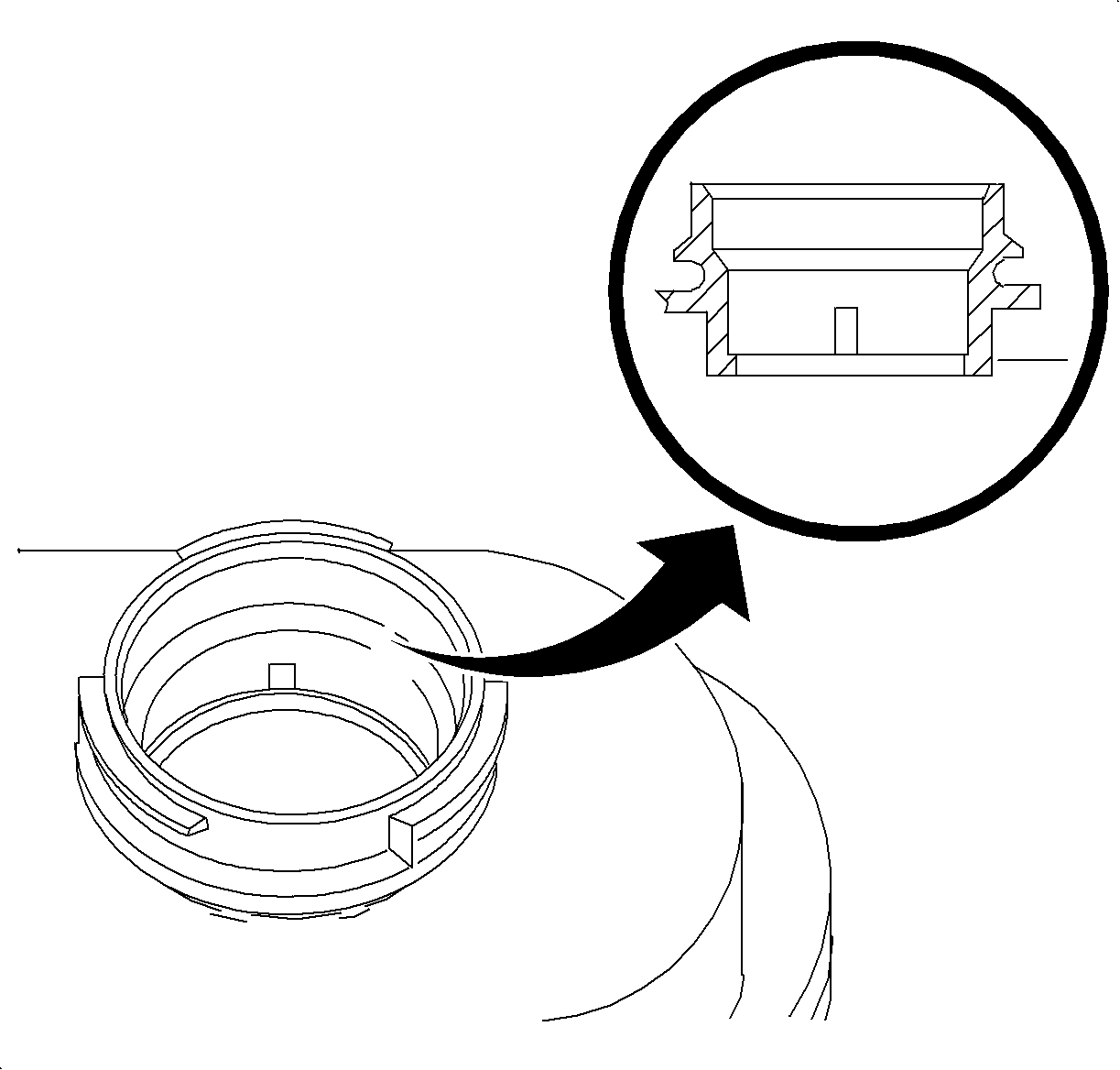
- Fill the master cylinder reservoir with brake fluid. Keep the reservoir at
least half full during the bleeding procedure.
Notice: Brake fluid is corrosive to painted surfaces. Take care not to allow brake fluid
to contact painted surfaces on vehicle.
Notice: Use only DOT 3 brake fluid from a clean, sealed container. Do not use any fluid
from a container which is wet with water. Do not use DOT 5 silicone fluid.
- If the master cylinder is suspected of having air in its bore,
it must be bled before proceeding to the brake line bleeding.
| 2.1. | Loosen the left front brake pipe (front upper port) at the master cylinder. |
| 2.2. | Allow the brake fluid to flow from front the master cylinder port. |
Notice: Refer to Fastener Notice in the Preface section.
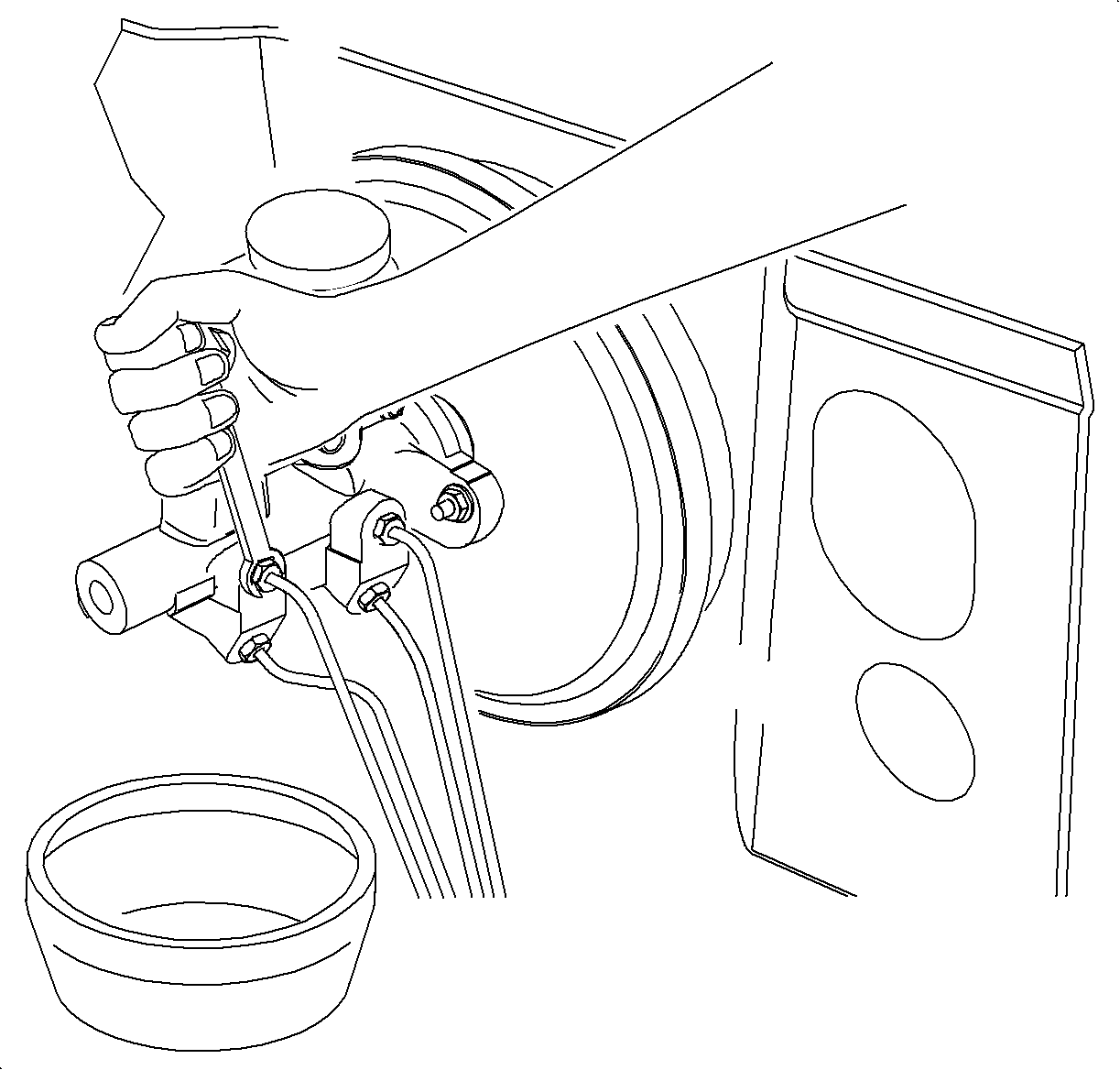
| 2.3. | Tighten the left front brake pipe into the master cylinder. |
Tighten
Tighten the fastener to 32 N·m (24 lb ft).
| 2.4. | Loosen the left front brake pipe at the master cylinder 1/4 turn. |
| 2.5. | Depress the brake pedal slowly until the fluid is seen coming from
the pipe nut. |
| 2.6. | Once again, tighten the left front brake pipe into the master cylinder,
while the pedal is being depressed. |
| 2.7. | Slowly release the pedal. |
Tighten
Tighten the fastener to 32 N·m (24 lb ft).
| 2.8. | Repeat the sequence until all the air is removed from the front (secondary)
master cylinder bore. |
| 2.9. | Loosen the right front brake pipe (rear upper port) at the master cylinder. |
| 2.10. | Allow the brake fluid to flow from the rear master cylinder port. |
| 2.11. | Tighten the right front brake pipe into the master cylinder. |
Tighten
Tighten the fastener to 32 N·m (24 lb ft).
| 2.12. | Loosen the right front brake pipe at the master cylinder 1/4 turn. |
| 2.13. | Depress the brake pedal slowly until the fluid is seen coming from
the pipe nut. |
| 2.14. | Once again, tighten the right front brake pipe into master cylinder while
the pedal is being depressed. |
| 2.15. | Slowly release the pedal. |
Tighten
Tighten the fastener to 32 N·m (24 lb ft).
| 2.16. | Repeat the sequence until all the air is removed from the rear (primary)
master cylinder bore. |
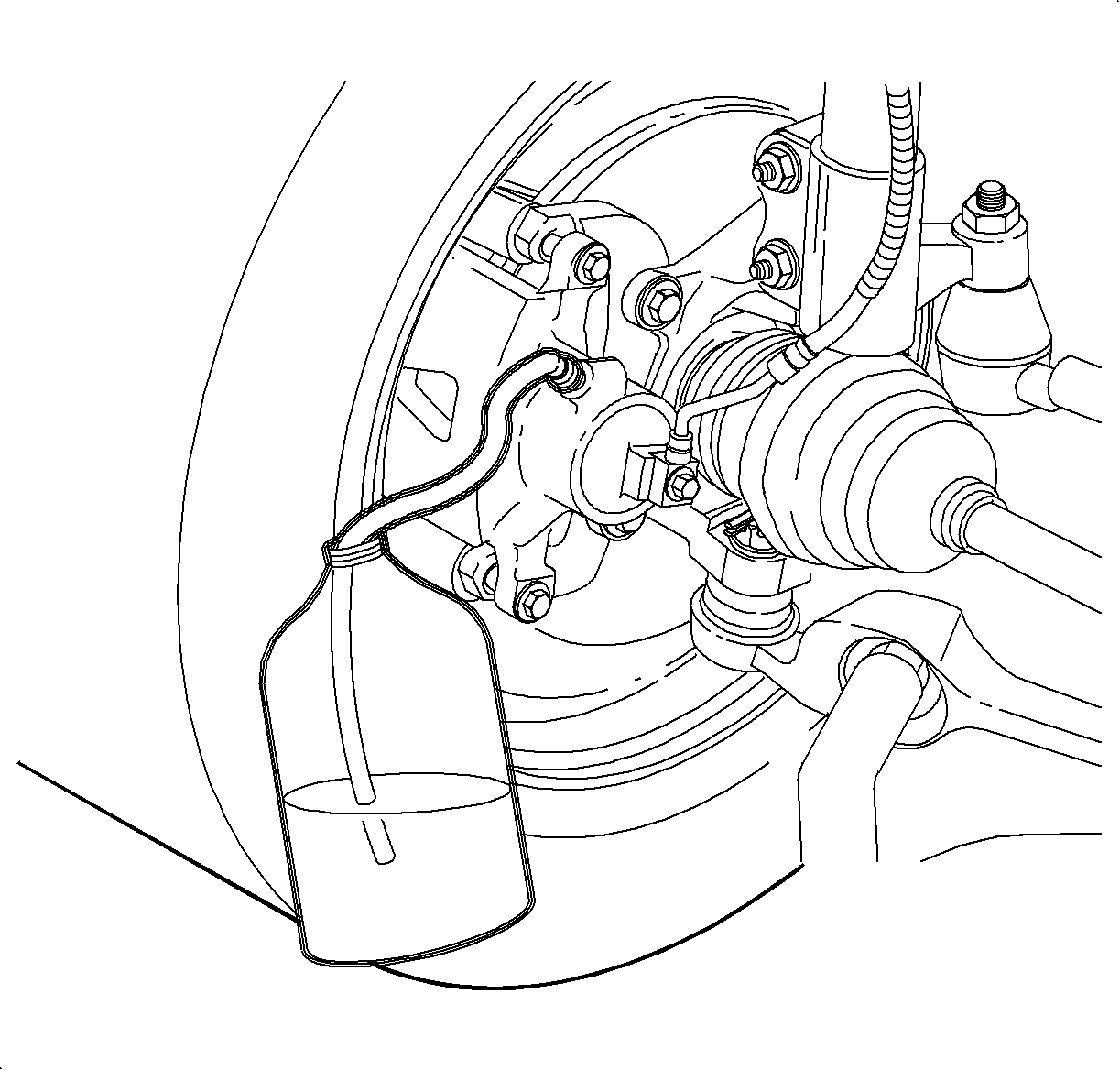
- Bleed the individual calipers and wheel cylinders.
| | Important: To assist in freeing entrapped air, tap lightly on the caliper casting with
a rubber mallet.
|
| 3.1. | Place a wrench over the bleeder valve. |
| 3.2. | Attach a transparent hose over the bleeder valve nipple. Submerge the
other end of the hose in a transparent container of brake fluid. |
| 3.3. | Loosen the bleeder screw. |
| 3.4. | Apply the brake pedal slowly and hold. |
| 3.5. | Tighten the bleeder valve. |
Tighten
| • | Tighten the front brake bleeder valve to 11 N·m (8 lb ft). |
| • | Tighten the rear brake bleeder valve to 7.5 N·m (66 lb in). |
| 3.6. | Release the brake pedal. |
| 3.7. | Repeat the sequence until all the air is removed from the brake pipes. |
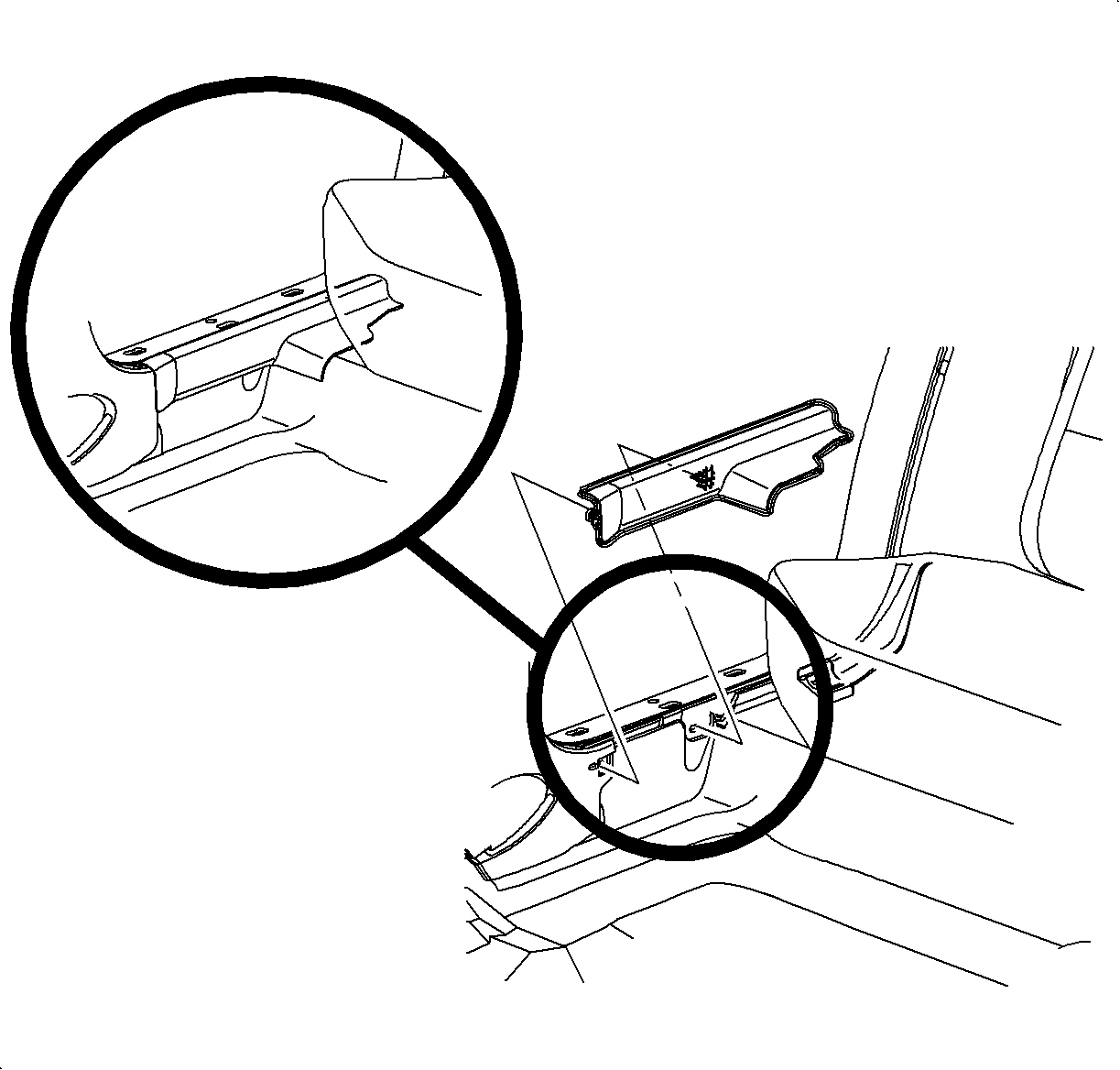
- If more than one brake pipe is being bled, bleed in the following sequence:
- Check the brake pedal feel for sponginess. If the brake pedal exhibits
this feel, repeat the bleeding procedure until the condition disappears.
- When the bleeding procedure is completed on each wheel, check the reservoir
fluid level. Fill as necessary.
Hydraulic Brake System Bleeding Pressure
Tools Required
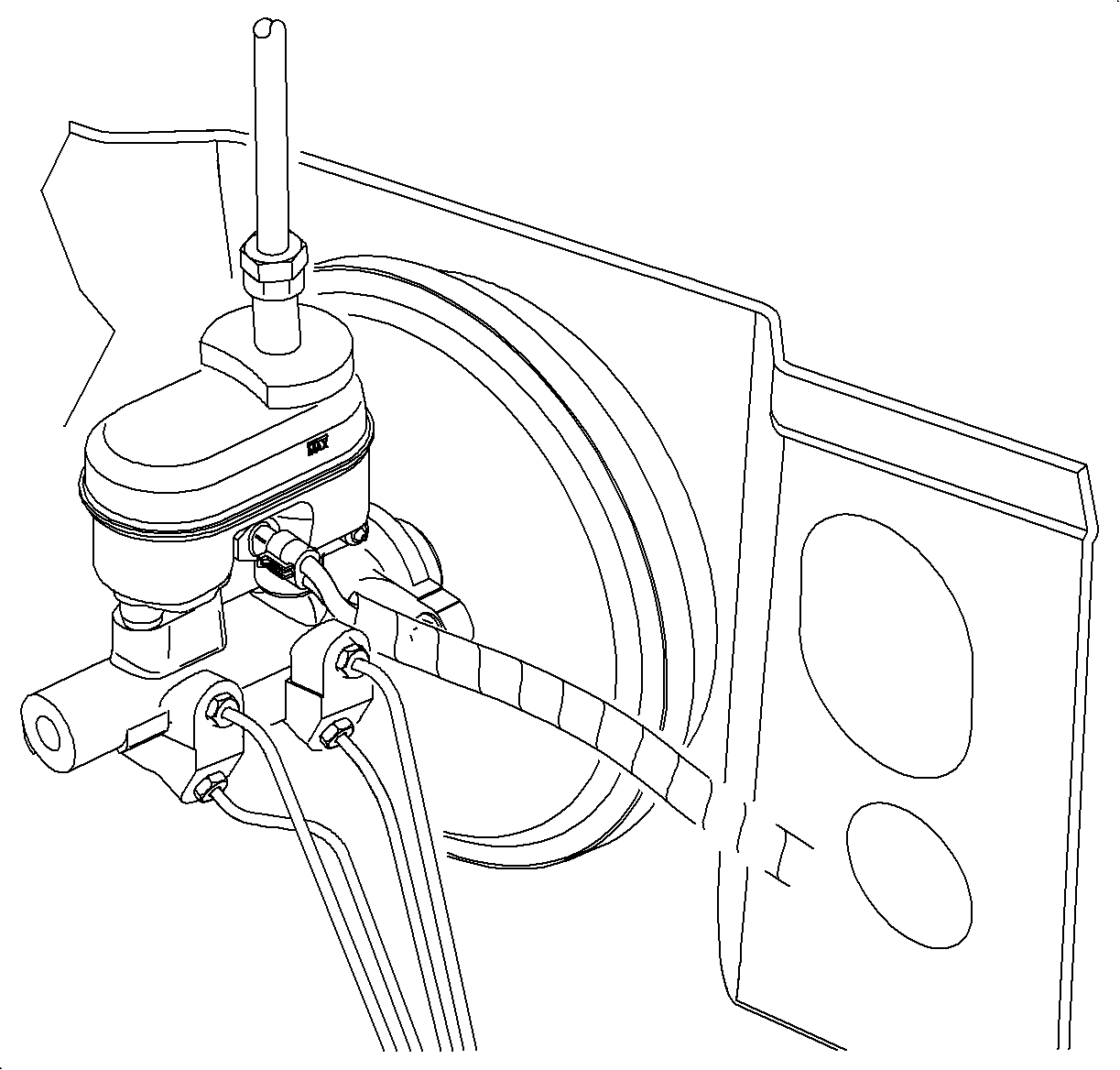
Notice: Pressure bleeding equipment must be of the diaphragm type. It must have a rubber
diaphragm between the air supply and the brake fluid to prevent air, moisture, and
other contaminants from entering the hydraulic system.
Notice: Use only DOT 3 brake fluid from a clean, sealed container. Do not use any fluid
from a container which is wet with water. Do not use DOT 5 silicone fluid.
- Clean the brake fluid reservoir cap and the area around the cap.
- Remove the cap.
- Fill the master cylinder reservoir with clean brake fluid.
- Install the SA9150BR
,
or equivalent, to the brake fluid reservoir.
- Connect the J 29532
,
or equivalent, to adapter.
- Charge the pressure bleeder equipment to 138-172 kPa (20-25 psi).
- Perform steps 2-6 of the
Hydraulic Brake System Bleeding
, skipping steps involving brake pedal
operation.





